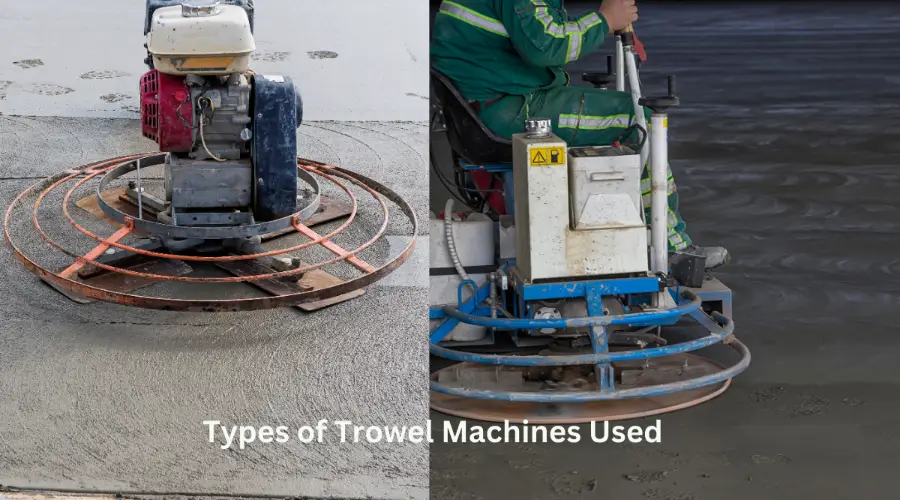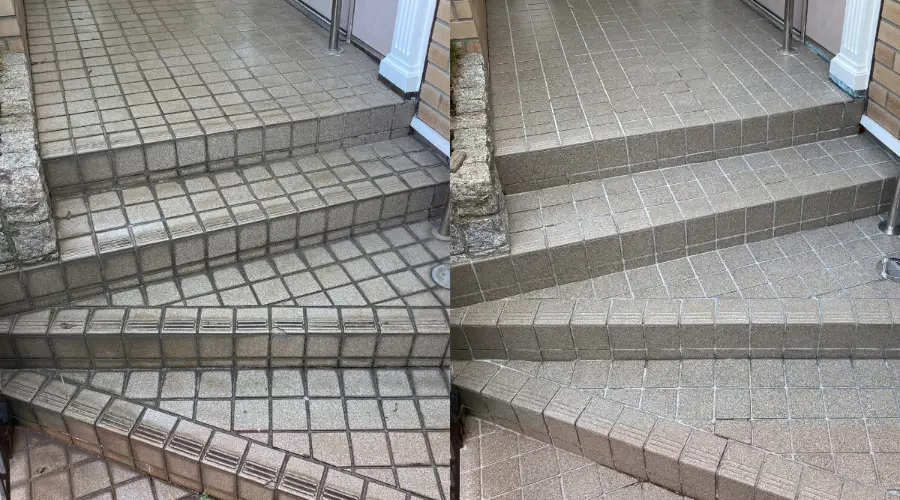A process of repeatedly rolling the concrete surface with a hand trowel or power trowel before the final set of the concrete. This process can take place after the initial set of the concrete. To ensure a smooth levelling surface on concrete slabs, troweling is important. Troweling helps to set the top layer of the concrete surface and it gives the concrete time to set concrete and harden to attain a smoother surface.
The weak spots or cracks can be easily identified by doing troweling. The air pockets that form during the pouring of concrete may be removed. Troweling can be done after the initial set of concrete and repeated after 24 hours. Lastly, 28 days are given for the concrete surface to cure. The significance, varieties, benefits, drawbacks, and workings of concrete trowels will all be covered in this article.
Importance of Concrete Trowel
A concrete trowel produces a finish that is even, dense, and smooth when completed after the initial setting. By levelling the surface, filling in gaps, and removing ridges, troweling enhances the surface’s longevity and look. This procedure lowers maintenance expenses for polished concrete floors and helps avoid further damage. The top layer is troweled, dried, and then sealed. It is a crucial step in the construction process, which is extremely beneficial.
Types of Trowel Machines Used

Concrete trowels are used to create a smooth finishing surface when the concrete surface attains the setting phase. Various demands on the concrete surface can be made by these troweling machines, and they are used to increase the appearance of the surface. Different types of troweling machines can be used across the construction industry, but the main two broad types of troweling machines are discussed below:
Power Trowel
An effective tool for levelling and smoothing concrete surfaces is a power trowel. It is perfect for precisely and swiftly finishing big concrete areas since it has revolving blades or a disc that spins at high speeds. Power trowels come in a range of sizes and can be powered by electricity or gasoline, providing versatility for a variety of job sites and environmental circumstances.
Because they produce a level, smooth surface on both horizontal and vertical surfaces, this equipment is crucial for concrete construction. Power trowels also eliminate flaws and inconsistencies, guaranteeing a superior surface that is long-lasting and aesthetically pleasing.
Ride-On Trowel
Large concrete surfaces can be levelled and smoothed with a ride-on trowel, a construction tool frequently employed in large-scale projects like commercial buildings or industrial complexes. The machine is effective at covering large areas since its operators sit atop it and move it around the surface. With interchangeable blades for a smooth, level finish, ride-on trowels can be operated manually or by self-propulsion.
Take your project’s size, the kind of concrete surface, and your budget into account when selecting a ride-on trowel. By examining the different models, you may select the machine that is most suited for the task. With the correct equipment, you can produce a high-quality, long-lasting concrete surface that appears professional and lasts for many years.
Advantages of Concrete Trowel
Concrete troweling may offer numerous benefits for a concrete surface, which are as follows:
- Troweling improves the surface’s strength and ability to endure over time.
- It can also lower the possibility of cracking.
- Concrete troweling increases moisture resistance by setting the air pockets formed during concrete pouring.
- Troweling can eliminate surface imperfections such as holes and air spaces.
- A clean, simple, and smooth surface can be developed using troweling.
Disadvantages of Concrete Trowel
Although concrete trowels offer many advantages, they also have some limitations. It’s essential to be aware of these before using one. They are discussed below:
- Timing and weather must be balanced to get the perfect concrete trowel finish.
- The best results need careful attention to detail and the use of appropriate techniques.
- A power trowel may be expensive to purchase or hire.
- Using a hand trowel requires a lot of physical labour.
- Professional assistance may be necessary for large-scale concrete troweling jobs.
Mechanism of Concrete Trowel
To create a smooth surface, concrete must be shaped while it is still wet. Hand trowels are useful for small spaces, but power trowels or ride-on trowels are better for bigger ones. Trowels are more effective and quicker. With a little instruction and practice, power trowels are easy to use. Here are some points to consider before using trowels for your construction project:
- Use the concrete trowel at the right time:
When the concrete is sufficiently solid to bear your weight, begin troweling, leaving only shallow imprints that are 1/8″ to 1/4″ deep. Start at the proper moment to avoid issues.
- The Basic Movement of Concrete Trowel:
To steer, push the handle down to steer right or lift it a little to go left. The machine reacts slowly, so be careful.
- First to float, second to finish:
Always use the proper blades to float the concrete before finishing. The different blades are available to have a perfect surface as follows:
- Mixing Blades: Fits both floating and completing by changing the angle of the blade. These are more expensive but more handy.
- Clip-On Float Blades: To make them float, attach them to complete blades; then take them off to complete.
- Panning: For quicker coverage, use a float pan. More effort and control are needed with this approach.
When to Use a Trowel

A smooth concrete finish depends on the time of troweling. Only begin while the concrete is still soft and workable but solid enough to hold the troweling tools. The concrete mix, temperature, and humidity all affect how long it takes for the concrete to cure. After pouring, it usually takes a few hours to a day to achieve the proper troweling stage.
To prevent surface damage, make sure the concrete is in a “plastic state,” which is solid but malleable. To verify preparedness, do a thumbprint test or measure surface moisture. For optimal results, balance scheduling with environmental elements, like temperature, wind, and humidity, which can affect the troweling window.
Conclusion
After floating, troweling is done to provide a polished, smooth surface and to add further compaction for strength. In addition to being aesthetically pleasing, a well-done trowel finish increases longevity and lowers ongoing care expenses. This calls for careful attention to detail and appropriate technique. The secret to good concrete troweling is using the right equipment, timing, and procedures. You may create a long-lasting, visually appealing surface that will endure with careful application.
FAQ’s
Crucial steps for getting a perfect smooth surface are as follows:
Use even, overlapping passes to avoid overworking the concrete.
Keep the trowel moving while floating at slower rates.
Avoid making abrupt direction changes or stopping in one place.
These methods guarantee a polished and long-lasting finish.
Troweling is typically done using a steel or wooden hand trowel to smooth freshly poured concrete manually; it requires patience and skill. Large projects may require power trowels or ride-on-trows to achieve smoother surfaces.

